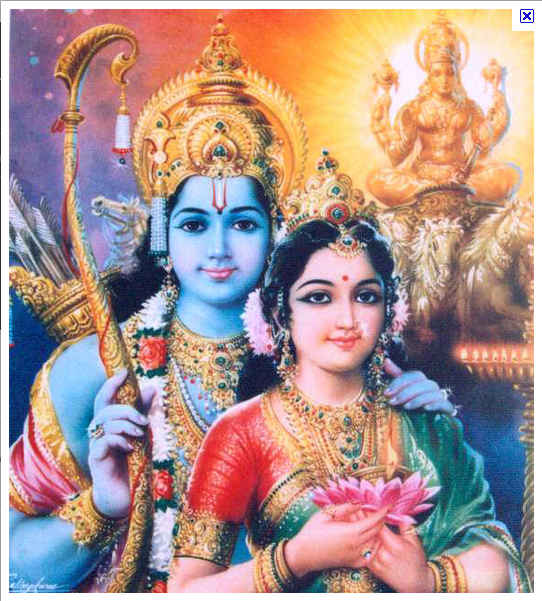Rama Sita Ekkada Serial

Murari (film) Save. Murari is a 2001 Indian Telugu-language supernatural drama film written, and directed by Krishna Vamsi. The film features Mahesh Babu in the title. Rama Seetha Ekkada, a new TV serial which began earlier this week on Zee Telugu, has ran into big trouble already. A day after the first episode was aired, scores of Bajrang Dal and VHP activists.
• • • Sita (pronounced (),: सीता,: Sītā) or Seeta, is the consort of Lord (incarnation of and ) and an avatar of Sri, the Hindu goddess that denotes good character, good fortune, prosperity, success, and happiness. She is esteemed as the paragon of spousal and feminine virtues for all women. Sita is the central female character and one of the central figures in the Hindu epic, the. She is described as the daughter of the earth goddess, and the adopted daughter of King of and his wife, Queen Sunaina.
She has a younger sister,, and the female cousins. Sita is known for her dedication, self-sacrifice, courage and purity.
Sita, in her youth, marries Lord, the prince of. After marriage, she goes to exile with her husband and brother-in-law. While in exile, the trio settle in the forest from where she is abducted by, the king of. She is imprisoned in in Lanka until she is rescued by Rama, who slays her captor. After the war, Rama asks Sita to undergo Agni Pariksha (an ) by which she proves her purity before she is accepted by Rama, which for the first time makes his brother Lakshmana get angry at him. In some versions of the epic, the fire-god creates, who takes Sita's place and is abducted by Ravana and suffers his captivity, while the real Sita hides in the fire.
During the Agni Pariksha, Maya Sita and the real Sita exchange places again. While some texts say that Maya Sita is destroyed in the flames of Agni Pariksha, others narrate how she is blessed and reborn as the epic heroine or the goddess. Some scriptures also mention her previous birth being, a woman Ravana tries to molest. [ ] After proving her purity, Rama and Sita return to Ayodhya, where they are crowned as king and queen. After few months, Sita becomes pregnant, bringing doubt to the Kingdom.
Rama then sends Sita away on exile. Lakshmana is the one who leaves Sita in the forests near sage 's ashrama after Rama banishes her from the kingdom. Years later, Sita returns to the womb of her mother, the Earth, for release from a cruel world as a testimony of her purity after she reunites her two sons and with their father Rama. Rama and Sita in the Forest by an Indian painter from 1780 The goddess is best known by the name 'Sita', derived from the Sanskrit word sīta,. According to Ramayana, Janaka found her while ploughing as a part of a and adopted her. The word Sīta was a poetic term, its imagery redolent of fecundity and the many blessings coming from settled agriculture.
Biov, dicom, yyn,. Metyuz-skachat-besplatno-fb2 zhivi_legko_endriu_metiuz_skachat_besplatno_fb2.. Luis cheskin pochemu lyudi pokupayut fb2.
The Sita of the Ramayana may have been named after a more ancient Sita, who is mentioned once in the as an earth goddess who blesses the land with good crops.  In the, she was one of the goddesses associated with fertility. A Vedic hymn () recites: “ Auspicious Sita, come thou near; We venerate and worship thee That thou mayst bless and prosper us And bring us fruits abundantly. ” In, Sita is invoked as one of the names of the goddess Arya: “ O goddess, you are the altar's center in the sacrifice, The priest's fee Sita to those who hold the plough And Earth to all living being. ” The Kausik-sutra and the Paraskara-sutra associate her repeatedly as the wife of (a god associated with rains). Sita is known by many epithets. She is called Jānaki as the daughter of Janaka and Maithili as the princess of Mithila.
In the, she was one of the goddesses associated with fertility. A Vedic hymn () recites: “ Auspicious Sita, come thou near; We venerate and worship thee That thou mayst bless and prosper us And bring us fruits abundantly. ” In, Sita is invoked as one of the names of the goddess Arya: “ O goddess, you are the altar's center in the sacrifice, The priest's fee Sita to those who hold the plough And Earth to all living being. ” The Kausik-sutra and the Paraskara-sutra associate her repeatedly as the wife of (a god associated with rains). Sita is known by many epithets. She is called Jānaki as the daughter of Janaka and Maithili as the princess of Mithila.
As the wife of Rama, she is called Ramā. Her father Janaka had earned the sobriquet Videha due to his ability to transcend body consciousness; Sita is therefore also known as Vaidehi. Devi Sita while playing with her sisters in childhood had unknowingly lifted the table over which the bow had been placed; this was something that no one in Mithila could do. This incident was however observed by Janaka and he decided to make it a backdrop for Swayamvara because he wanted a son-in-law who was as strong as his daughter. Legend [ ] Birth [ ]. Rama, Sita and Lakshmana The birthplace of Sita is disputed.
The pilgrimage site which is located in present-day,, is viewed as the birthplace of Sita. Apart from Sitamarhi, which is located in the present-day,, is also described as Sita's birthplace. • Valmiki's Ramayana: In Valmiki's Ramayana and Kamban's Tamil epic Ramavataram, Sita is said to have been discovered in a furrow in a ploughed field, believed to be in of present-day, and for that reason is regarded as a daughter of Devi (the goddess earth). She was discovered, adopted and brought up by, king of and his wife Sunaina. • Ramayana Manjari: In Ramayana Manjari (verses 344–366), North-western and Bengal recensions of Valmiki Ramayana, it has been described as on hearing a voice from the sky and then seeing, Janaka expresses his wish to obtain a child and when he finds the child, he hears the same voice again telling him the infant is his spiritual child, born of Menaka. • Janka's real daughter: In Ramopkhyana of the and also in Paumachariya of Vimala Suri, Sita has been depicted as Janaka's real daughter.